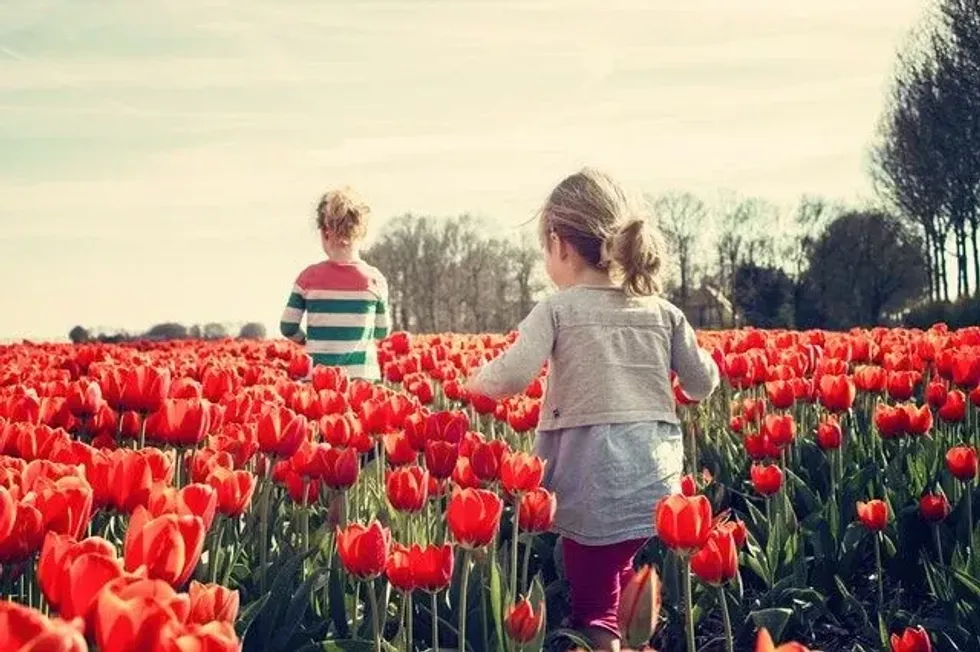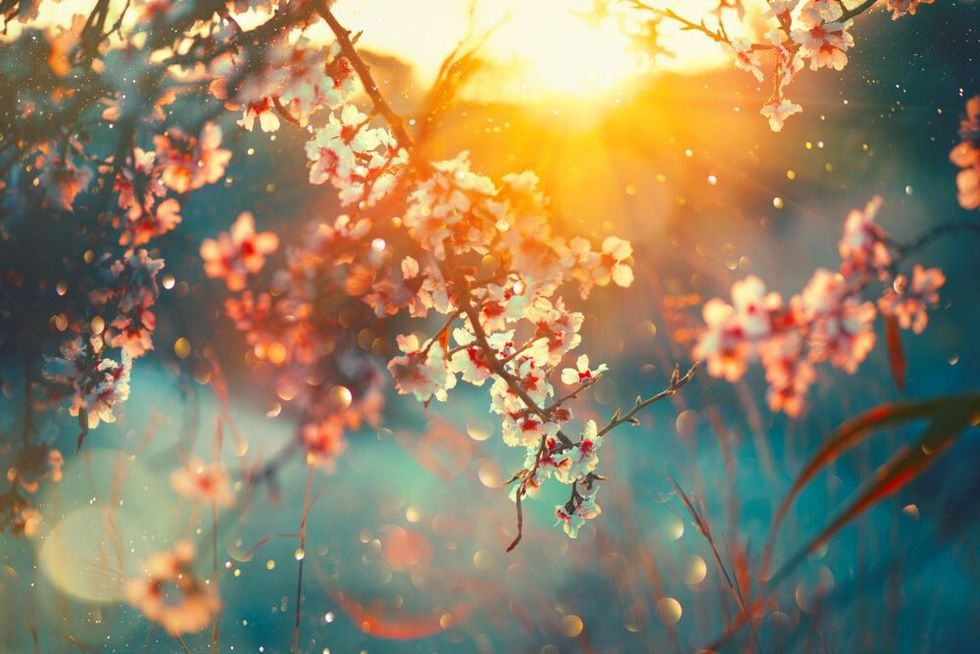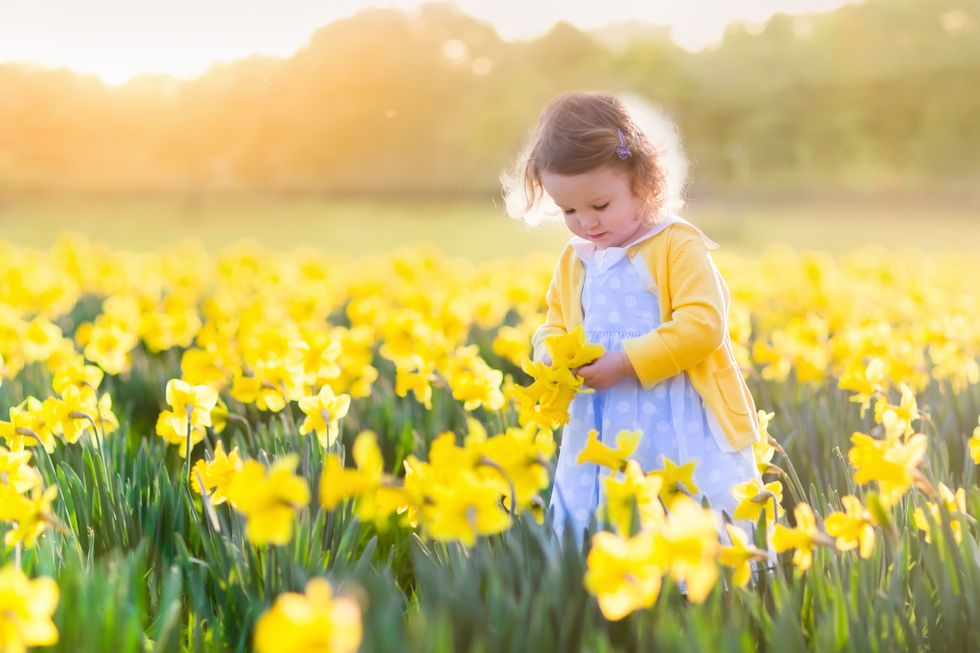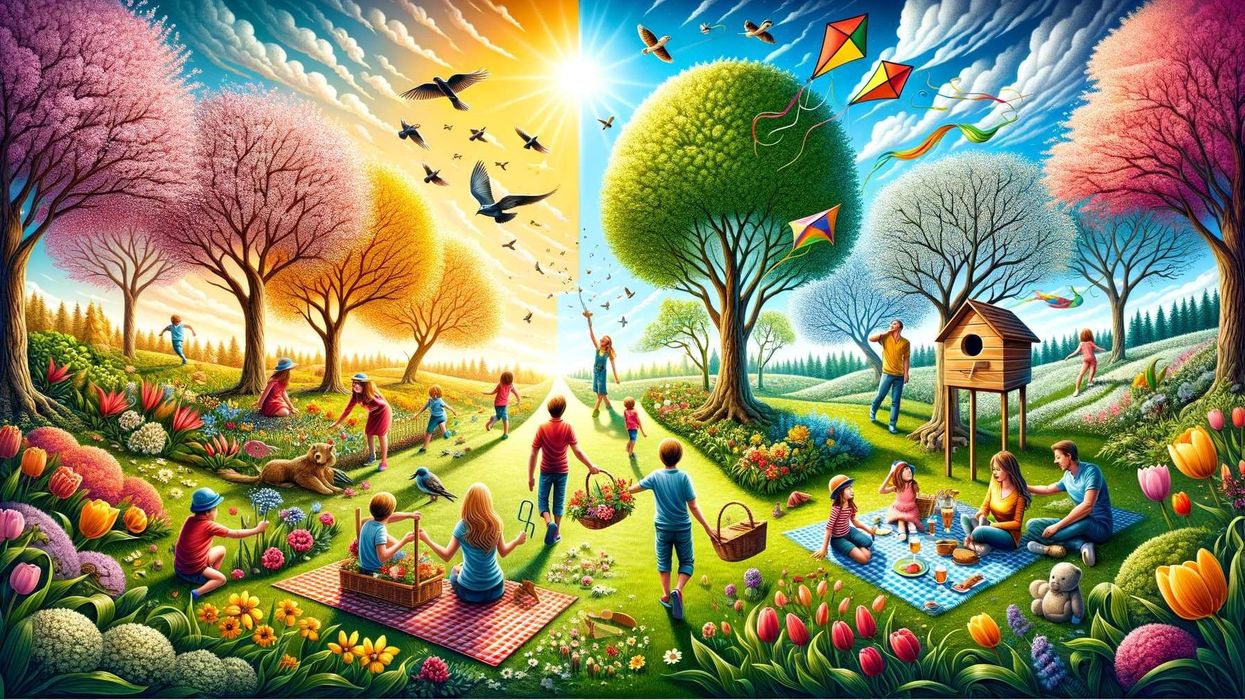Spring is a season of rebirth and renewal, a time when the Earth awakens from its winter slumber and bursts with new life. The whisper of springtime echoes through the air, bringing with it the fresh promise of warmer days. As winter's icy grip loosens, the arrival of spring marks a period of transformation. Days stretch longer, the sun shares its generous warmth, and nature orchestrates a vibrant spectacle.
With the advent of spring, the natural world becomes a child's playground, full of discoveries and outdoor adventures. Delicate spring flowers emerge, dotting the landscape with splashes of color, and inviting kids to witness the cycle of life firsthand. It is a season perfect for young minds, eager to learn spring facts and explore the wonders that unfold right before their eyes.
Spring begins with a whisper of magic, a call to venture outside and soak in the season's beauty. In this enchanting time, the Earth revitalizes itself, offering myriad learning opportunities for kids, from understanding the science behind the changing seasons to observing the unique behaviors of animals as they prepare for the months ahead. So, open the door to curiosity and step into an exciting world of springtime exploration, designed to captivate the imagination of children and adults alike.
Intriguing Facts About Spring's Natural Wonders

Discover the wonders of spring, a season famed for its dynamic transformation and natural beauty. As the world awakens from its winter slumber, witness nature's incredible ability to regenerate and thrive. This section unpacks some of the most captivating facts about the spring season that often go unnoticed.
- It is one of the four temperate seasons, following winter and preceding summer. Spring is a time when the Earth seems to come back to life after the cold and barren months, with plants beginning to grow and flower.
- In the Northern Hemisphere, spring starts with the vernal equinox, around March 20-21, when the day and night are of almost equal length, hence the term 'equal night'.
- Vernal Equinox is the astronomical event that marks the first day of spring and occurs when the sun crosses the celestial equator going north. This is also true for the Southern Hemisphere, but it signifies the beginning of autumn instead.
- Spring Fever is a term that often refers to a heightened mood and energy that many people experience with the warmer temperatures and increased daylight of spring.
- From the first spring flowers, like the yellow daffodils, to a variety of annual flowers, spring brings a burst of colors and life after the winter months. These flowers are crucial for pollinators and mark the beginning of the growing season.
- Daylight savings, often associated with the phrase 'spring forward', involves setting the clocks forward one hour to extend evening daylight. It typically starts in the spring, reducing the need for artificial lighting and saving energy.
- At the time of the spring (or vernal) equinox, the North Pole begins to tilt toward the sun, leading to increasingly longer days in the Northern Hemisphere until the summer solstice. Conversely, the South Pole starts to tilt away from the sun, signaling the end of uninterrupted daylight and the approach of winter.
- Spring is characterized by a gradual increase in temperatures, leading to the melting of snow and ice. This seasonal warming encourages plants to grow and animals to become more active.
- Many cultures celebrate the spring equinox with festivals and rituals that welcome new life and warmer days, embodying themes of fertility, resurrection, and new beginnings.
- The patterns of spring, including the timing of flowers blooming and animals waking from hibernation, are being affected by climate change, leading to shifts in the timing and length of the season.
Celebratory Facts About Spring Traditions And Customs

The advent of spring is not merely confined to the realms of burgeoning plant life and the chorus of newly hatched birds. It is a period rich with cultural significance, echoing with celebrations that span the globe. A period when Arbor Day advocates for environmental stewardship through the planting of trees, solidifying a commitment to a more sustainable future. In tandem, the colorful and exuberant festivities of Cinco De Mayo commemorate historical triumphs with a zest for life and cultural pride.
- In India, the spring season is celebrated with Holi, also known as the Festival of Colors.
- Hanami, which involves the appreciation of cherry blossoms, is a springtime tradition in Japan.
- In numerous countries, Mother's Day is observed on the second Sunday in May.
- Passover is a Jewish holiday that remembers the Israelites' liberation from Egypt.
- The National Cherry Blossom Festival is an annual event held in Washington D.C.
- Easter is a Christian celebration that commemorates the resurrection of Jesus Christ.
- Earth Day, observed on April 22, is dedicated to promoting environmental protection.
- Songkran, the Thai New Year water festival, is celebrated in mid-April.
- During Tulip Season, the Netherlands becomes renowned for its vibrant tulip fields and the Keukenhof Garden.
- Nowruz coincides with the spring equinox and is celebrated by Iranians and Central Asians as the New Year.
- The Spring Scream is a music and arts festival that takes place every year in Taiwan.
- Uttarayan, a kite-flying festival signaling the arrival of spring, is celebrated in Gujarat, India.
- April Fool's Day, celebrated on April 1, is a day filled with pranks and jokes in many Western countries.
- Las Fallas is a festival in Valencia, Spain, known for its parades, fireworks, and effigies.
- May Day is celebrated in some European countries with dances around a maypole.
- The Cooper's Hill Cheese-Rolling event is a unique spring festival that takes place in England.
- The Fiesta De San Isidro is a celebration honoring the patron saint of farmers in Spain.
- The Beltane Fire Festival in Scotland celebrates Scottish and Celtic music and arts.
- Cinco De Mayo, observed on May 5, celebrates Mexican heritage and culture in the United States.
- Nowruz, marking the Persian New Year, coincides with the first day of spring, celebrating the equinox.
- Celebrated in the spring, Good Friday is a significant religious observance.
- Floralie is a Brussels spring flower festival showcasing magnificent floral arrangements, with flower parades and various events to celebrate the spring bloom.
- Cimburijada is a festival in Zenica marking spring's onset and the beginning of planting, highlighted by folk music, dance, and a procession of traditional attire and masks.
- The Easter Egg Roll is an annual event at the White House with egg-rolling competitions, live shows, and activities for families, held on the South Lawn.
- Walpurgis Night is a spring celebration on April 30, signaling the coming of spring and the midpoint between the spring equinox and summer solstice, characterized by bonfires, dancing, and ancient pagan customs.
- Pahela Baishakh marks the start of the Bengali New Year and the new harvest season, celebrated with community fairs, vibrant parades, and cultural festivities.
Amazing Facts About Spring Animals And Their Appearances

As spring paints the Earth with vibrant hues, it also heralds the arrival of a bustling season for wildlife. From the tiniest insects to majestic mammals, spring is a time of great activity for animals. It’s a season filled with the sounds of chirping birds and the sight of newborn animals taking their first steps. Discover the miraculous events unfolding in the animal kingdom this spring with captivating facts that weave the story of growth and survival.
- Spring is a critical time for the birth of many animals, including baby birds, which can often be seen leaving their nests. The abundance of food and mild weather make it an ideal season for rearing young.
- Many bird species embark on long migrations during spring, traveling thousands of miles to reach their breeding grounds. The Arctic tern holds the record for the longest known migration, with an incredible journey from its winter home in the Antarctic to the Arctic where it summers.
- Spring brings the season of birth for many animals, as warmer temperatures and the abundance of food make it an ideal time to raise offspring. Lambs, fawns, and bunny rabbits are just a few of the animals commonly born during this time.
- Amphibians such as frogs and salamanders are also active in spring. They migrate to breeding pools and ponds en masse, known as 'explosive breeding', where they will lay their eggs.
- Insects like bees and butterflies emerge from hibernation or complete their life cycles to become adults. Spring provides perfect conditions for pollination, as these insects play vital roles in ecosystems by helping to fertilize plants.
- Animals also undergo physical changes in preparation for the warmer season. Many shed their thick winter coats for lighter ones. This includes species ranging from domesticated animals like cats and dogs to wild ones like foxes and bears.
Fun Facts About Spring Flowers and Their Beauty

iStockphoto
Spring is nature's way of saying, 'Let's party!', and nothing signifies this more beautifully than the emergence of spring flowers. These vibrant blossoms bring the landscape to life, offering a feast for the senses with their vivid colors and sweet fragrances. Delve into the wondrous world of spring flowers, uncovering fascinating facts that highlight their importance and beauty.
- Tulips, daffodils, and hyacinths are some of the first flowers to bloom in spring, often pushing their way through the last snow to signal the change of seasons. These flowers are known as 'spring ephemerals', meaning they have a short life cycle to take advantage of the early spring sunlight before the trees leaf out.
- Cherry blossoms, known for their picturesque beauty, have a special place in springtime celebrations. In Japan, the arrival of cherry blossoms, or sakura, is celebrated with hanami parties, where people gather under the blooming trees to enjoy the fleeting beauty of the flowers.
- The bright yellow petals of forsythia bushes are often among the first pops of color seen in spring gardens, even before the green leaves appear. These shrubs can bloom as early as late winter, depending on the climate.
- Spring flowers aren't just pretty to look at; they're also crucial for pollinators like bees, who wake up from their winter dormancy in need of food. Flowers like crocuses and snowdrops provide these essential early-season nectar sources.
- The variety of spring flowers is astonishing, each adapted to their environment in unique ways. Some, like the skunk cabbage, can generate their own heat to melt surrounding snow, while others like the marsh marigold are perfectly suited to wet, soggy grounds typical of spring thaw.
FAQs
What is special about the spring season?
Spring is special because it is a period of significant natural transformation and growth. Following the cold, often barren winter months, spring brings warmth, light, and the reawakening of flora and fauna. Trees and plants begin to grow new leaves, flowers start to bloom, and animals awake from hibernation.
It is also a time for rebirth and reproduction for many species, leading to an abundance of newborn wildlife. For humans, spring is often associated with renewal, optimism, and the celebration of colorful festivals, reflecting the fresh and vibrant changes in the environment.
Why is spring called 'spring'?
The term 'spring' comes from the Old English word 'springan', meaning 'to leap', 'burst forth', or 'fly up', reflecting the season's dynamic and lively nature. It is a period when everything seems to 'spring up.' Historically, this season was referred to as 'lent' in Old English, which signified the lengthening of days as the earth moves past the vernal equinox.
Over time, the term evolved to 'springing time', a reference to plants 'springing' from the ground, and later simply to 'spring', the term used today. This name encapsulates the essence of the season: a rapid and vigorous emergence of life from the earth.
What is spring and why is it important?
Spring is one of the four temperate seasons, marking the transition from winter into summer. It's a time when the Earth's axis tilts toward the sun, leading to longer days and warmer temperatures in the hemisphere experiencing spring.
This season is important because it triggers many biological changes, such as plant growth, flowering, and animal activity, after the dormancy of winter. It’s a period of renewal and rejuvenation for ecosystems, contributing to biodiversity and the continuation of life cycles.
How do animals adapt to the changes in spring?
Animals adapt to spring in a variety of ways. Many species awaken from hibernation due to increasing temperatures and daylight hours, which signal the availability of food resources. Migratory birds return from their wintering grounds to take advantage of breeding habitats and resource abundance.
Animals also adjust their behaviors, such as shedding heavier winter coats, mating, and nurturing their young. Amphibians, such as frogs, move to breeding sites, and insects like bees and butterflies begin their pollination activities.
What are some common spring flowers and when do they bloom?
Common spring flowers include tulips, daffodils, crocuses, hyacinths, and forsythia. These flowers typically begin to bloom as early as late winter or early spring, depending on the climate and region. They are known for their resilience and ability to thrive shortly after the last frost. For example, cherry blossoms, especially celebrated in Japan, bloom in early spring and are a much-anticipated sign of the season.
How can families enjoy the spring season?
Families can enjoy the spring season by engaging in outdoor activities such as gardening, picnics, nature walks, and bird-watching. Planting spring flowers or starting a vegetable garden can be an educational experience for children, teaching them about plant life cycles and the importance of caring for the environment.
Visiting local parks, forests, or botanical gardens during spring allows families to see the season's changes firsthand and appreciate the natural beauty of the blooming landscape.
As the chapters of winter close, the story of spring bursts forth with a flourish of life and color. You've explored the awakening of animals, the blooming of flowers, and the cultural significance of this season that captivates with its promise of renewal.
The facts about spring reveal a symphony of natural wonders, from the science behind the warming days to the poetry of cherry blossoms dancing in the breeze. It’s a time that inspires both whimsy and curiosity in kids and adults alike, urging you to step outside, connect with the vibrant world around you, and reflect on the perpetual cycles that drive the planet.
Related Articles Around the Web













